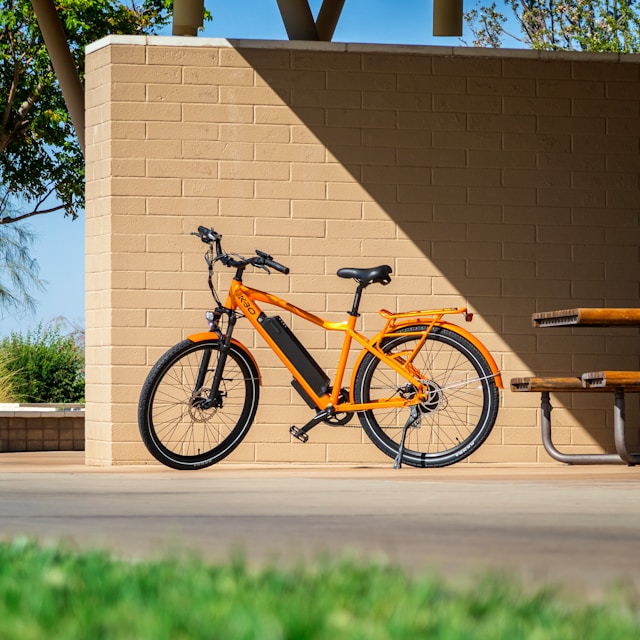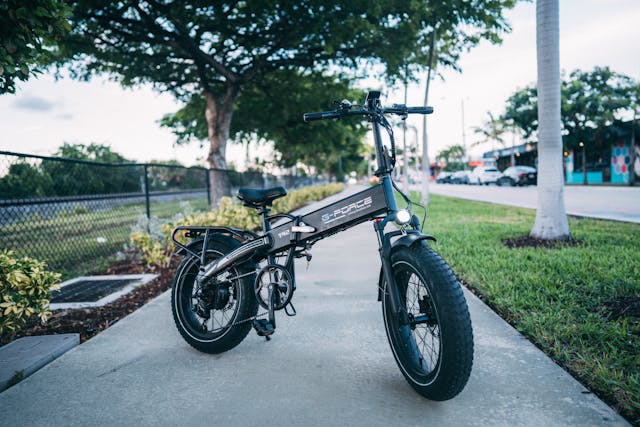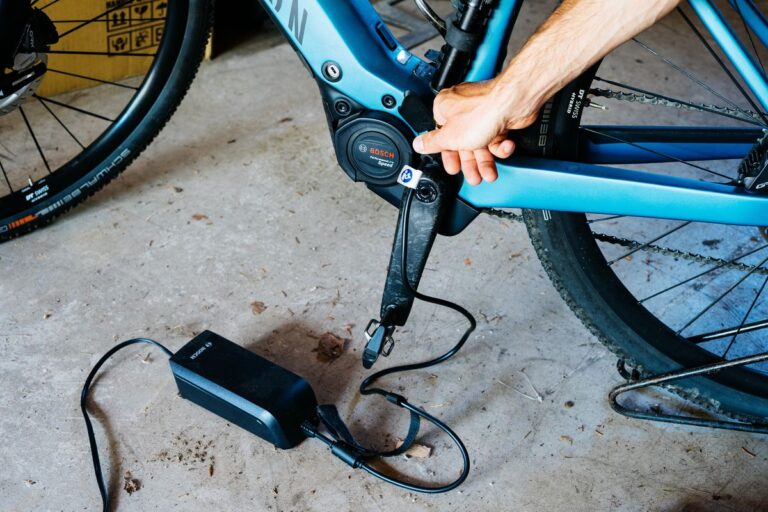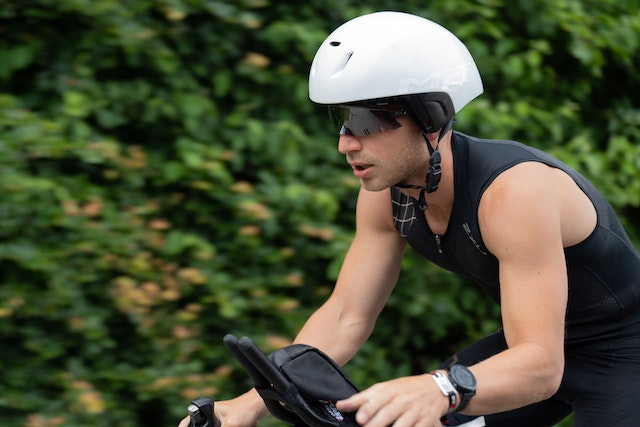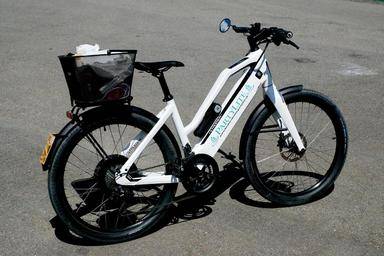Riding an Electric Bike in the Rain: Tips, Safety, and Gear
With the rapid rise in popularity of electric bikes (e-bikes), more and more enthusiasts are embracing this eco-friendly and efficient mode of transportation. Offering a convenient and environmentally conscious alternative to traditional bicycles and cars, electric bikes have revolutionized urban commuting and recreational cycling. However, as riders navigate through various terrains and weather conditions, a crucial consideration emerges: how do electric bikes fare in rainy weather?
As the allure of electric bikes continues to grow, so does the necessity for comprehensive guidance on navigating adverse weather conditions. Riding an electric bike in the rain presents unique challenges that riders must address to ensure both the safety and longevity of their e-bikes. From understanding how rain affects the performance of electric bike components to selecting the appropriate gear and adopting safe riding practices, there’s a wealth of information to explore when it comes to riding electric bikes in wet conditions.
In this blog post, we delve into the intricacies of riding electric bikes in the rain, offering valuable insights and practical tips to help riders make informed decisions and ride with confidence regardless of the weather. Whether you’re a seasoned e-bike enthusiast or a newcomer curious about exploring electric bike commuting, join us as we navigate through the essential considerations, gear recommendations, maintenance tips, and safety precautions necessary for a seamless and enjoyable e-biking experience even when the skies are gray and the rain is pouring.
Understanding the Challenges of Riding Electric Bikes in the Rain
Rainy weather presents a unique set of challenges for electric bike riders, affecting both the performance of the bike’s components and the overall riding experience. Here’s a closer look at how rain impacts electric bike components and riding dynamics:
Impact on Electric Bike Components:
- Motors: Rainwater can seep into the motor housing, potentially causing damage to the internal components and reducing efficiency. Moisture infiltration may lead to corrosion and decreased motor lifespan if not properly addressed.
- Batteries: Electric bike batteries are typically housed in waterproof enclosures; however, prolonged exposure to rain can still pose a risk of water ingress. Water damage to the battery can compromise performance and even pose safety hazards. Proper care and maintenance are essential to mitigate this risk.
- Electronics: The delicate electronic components of electric bikes, such as controllers and displays, are susceptible to water damage. Moisture infiltration can disrupt electrical connections, leading to malfunctions or complete failure. Protective measures, such as waterproof covers and enclosures, can help safeguard these components against rain-related damage.
Effect on Traction, Braking, and Overall Performance:
- Traction: Wet road surfaces significantly reduce tire grip, affecting the bike’s ability to maintain traction, especially during acceleration and cornering. This decreased traction increases the risk of skidding and loss of control, necessitating adjustments to riding style and technique.
- Braking: Rain-soaked roads reduce the effectiveness of brakes, both mechanical and hydraulic, due to decreased friction between brake pads and wet surfaces. Riders must apply brakes earlier and with greater caution to compensate for longer stopping distances in rainy conditions.
- Overall Performance: The combination of moisture, mud, and debris on the road can impede the bike’s performance, causing increased resistance and reduced efficiency. Riders may experience sluggish acceleration, decreased range, and overall diminished ride quality when navigating through wet terrain.
Understanding these challenges is paramount for electric bike riders to prepare adequately and take necessary precautions when venturing out in rainy weather. By addressing potential vulnerabilities in electric bike components and adapting riding techniques to suit wet conditions, riders can enhance safety and prolong the lifespan of their e-bikes.
RELATED CONTENT – Tips for Safe Electric Bike Commuting
RELATED CONTENT – Enhancing the Comfort of Long Electric Bike Rides
Essential Gear for Riding Electric Bikes in the Rain
Riding an electric bike in the rain requires more than just a sturdy umbrella and a brave spirit. Proper gear is essential to ensure comfort, safety, and protection from the elements. Here’s why investing in the right gear is crucial for rainy weather riding
Importance of Waterproof Accessories:
- Fenders: Installing fenders on your electric bike is one of the most effective ways to minimize the amount of water and mud splashed onto you and your bike while riding in the rain. Fenders prevent water from spraying up from the tires, keeping you dry and your bike cleaner.
- Covers: Waterproof covers designed specifically for electric bikes offer additional protection from rain, preventing moisture from seeping into sensitive components such as the battery, motor, and electronics. These covers are especially useful for outdoor storage or when transporting your e-bike on a vehicle rack.
- Bags: Waterproof bags or panniers are indispensable for keeping your belongings dry during rainy rides. Whether you’re commuting to work or embarking on a weekend adventure, waterproof bags ensure that your valuables, such as electronics, clothing, and documents, remain safe and dry, regardless of the weather.
Recommendations for Rain Gear:
- Jackets: Look for waterproof and breathable jackets specifically designed for cycling. These jackets typically feature sealed seams, adjustable cuffs, and ventilation panels to keep you dry and comfortable while riding in the rain. Reflective accents and bright colors enhance visibility in low-light conditions.
- Pants: Waterproof and windproof pants with articulated knees and adjustable waistbands provide excellent protection from rain and wind while allowing freedom of movement. Look for options with reinforced seats and knees for durability and enhanced comfort during prolonged rides.
- Gloves: Waterproof cycling gloves with insulated liners offer warmth and protection from rain, wind, and cold temperatures. Features such as touchscreen compatibility and reflective elements add functionality and visibility, making them ideal for commuting and recreational riding in wet conditions.
By investing in waterproof accessories such as fenders, covers, and bags, as well as high-quality rain gear including jackets, pants, and gloves, electric bike riders can ride confidently and comfortably in the rain, knowing that they’re well-equipped to handle whatever Mother Nature throws their way.
RELATED CONTENT – 14 Crucial Safety Tips for Riding an Electric Bike
Maintenance Tips for Rainy Weather Riding
Riding an electric bike in the rain can be exhilarating, but it also requires extra care and attention to keep your bike in optimal condition. Here are some essential maintenance tips to keep your e-bike running smoothly, rain or shine:
Guidance on Cleaning and Drying the Bike: After riding in the rain, it’s crucial to thoroughly clean and dry your electric bike to prevent moisture-related damage and corrosion. Follow these steps to maintain your e-bike:
- Wipe Down Surfaces: Use a soft cloth or sponge to wipe down the frame, fork, and other exposed parts of the bike to remove any dirt, mud, or debris accumulated during the ride.
- Clean Drivetrain: Use a degreaser and a brush to clean the chain, cassette, and derailleur pulleys. Rinse with water and dry thoroughly to prevent rust and corrosion.
- Dry Components: Pay special attention to drying sensitive components such as the battery, motor, and electronics. Use a clean, dry cloth to wipe these areas and ensure they are completely dry before storing or charging the bike.
- Lubricate Moving Parts: Apply lubricant to the chain, derailleur pivots, and other moving parts to prevent rust and ensure smooth operation. Avoid using excessive lubricant, as it can attract dirt and grime.
Importance of Regular Maintenance: Regular maintenance is essential for preserving the longevity and performance of your electric bike, especially when riding in wet conditions. Here’s why it’s important to stay on top of maintenance:
- Prevent Rust and Corrosion: Moisture from rain can accelerate the formation of rust and corrosion on metal components of the bike, including the frame, drivetrain, and hardware. Regular cleaning and lubrication help prevent moisture buildup and protect against corrosion.
- Ensure Smooth Operation: Wet conditions can cause dirt and debris to accumulate on moving parts, leading to increased friction and wear. Regular maintenance, including cleaning and lubrication, helps ensure smooth operation of the drivetrain, brakes, and suspension components.
- Extend Lifespan: By maintaining your electric bike properly, you can extend its lifespan and maximize its resale value. Regular cleaning, lubrication, and inspection of components help identify and address any issues before they escalate into more significant problems.
By following these maintenance tips and staying proactive about caring for your electric bike, you can enjoy many miles of reliable and enjoyable riding, rain or shine. Remember to clean and dry your bike after riding in the rain and schedule regular maintenance checks to keep your e-bike in top condition for years to come.
Safety Precautions for Riding Electric Bikes in Wet Conditions
Riding an electric bike in wet conditions requires heightened awareness and caution to ensure a safe and enjoyable experience. Here are some essential safety precautions to keep in mind when venturing out in the rain:
Emphasis on Caution and Slower Speeds:
- Increased Caution: Rainy weather introduces a variety of hazards on the road, including reduced traction, decreased visibility, and slippery surfaces. It’s essential to approach riding in the rain with heightened caution and mindfulness of potential dangers.
- Slower Speeds: Reduce your speed when riding in wet conditions to maintain control and stability. Slower speeds allow for better reaction time and maneuverability, minimizing the risk of skidding or losing control on slick surfaces.
Proper Braking Techniques:
- Gentle Braking: Apply brakes gradually and with gentle pressure to avoid locking up the wheels on wet surfaces. Sudden or aggressive braking can lead to skidding and loss of control, particularly on slippery roads.
- Use Both Brakes: Utilize both the front and rear brakes when coming to a stop in wet conditions. Distributing braking force between the front and rear wheels helps maintain stability and reduces the risk of skidding.
- Anticipate Stopping Distance: Recognize that stopping distances increase in rainy weather due to reduced traction. Allow for extra distance between yourself and other vehicles, pedestrians, and obstacles to account for the longer stopping distance required.
Maintaining a Safe Distance from Vehicles:
- Increase Following Distance: Keep a safe distance from vehicles in front of you to allow for ample reaction time and visibility. Tailgating increases the risk of rear-end collisions, especially in rainy conditions where stopping distances are extended.
- Stay Visible: Maintain a visible position on the road by using lights, reflective gear, and hand signals to communicate your intentions to drivers. Be proactive about making yourself seen, particularly in low-light or rainy conditions where visibility may be limited.
By prioritizing caution, practicing proper braking techniques, and maintaining a safe distance from vehicles, electric bike riders can mitigate the risks associated with riding in wet conditions and enjoy a safer and more confident riding experience. Remember to adjust your riding style to suit the weather conditions and prioritize safety at all times.
Choosing the Right Electric Bike for Rainy Weather
Selecting the appropriate electric bike for riding in rainy weather involves considering specific features and design elements that enhance durability, performance, and weather resistance. Here’s what to look for when choosing an electric bike that can withstand the challenges of wet conditions:
Features to Look For:
- Sealed Components: Opt for electric bikes with sealed components, including motors, batteries, and electronics. Sealed designs help prevent water ingress and protect sensitive internal components from moisture-related damage.
- Waterproofing: Choose electric bikes with waterproof or water-resistant construction, such as sealed seams, gaskets, and connectors. Waterproofing measures ensure that critical components remain protected from rain, splashes, and moisture infiltration.
- Durable Frame Materials: Prioritize electric bikes with frames constructed from corrosion-resistant materials, such as aluminum alloys or stainless steel. Durable frame materials offer longevity and resilience against rust and degradation, even when exposed to wet conditions.
- Integrated Fenders and Mudguards: Look for electric bikes equipped with integrated fenders and mudguards to shield you and the bike from water, mud, and debris kicked up by the wheels. Integrated fenders help keep you dry and minimize water spray onto critical components.
- Rust-Resistant Hardware: Inspect the hardware and fasteners used in the construction of the electric bike for corrosion-resistant materials, such as stainless steel or coated alloys. Rust-resistant hardware ensures long-term reliability and performance, even in wet and corrosive environments.
Recommendations for Rain-Ready Electric Bikes:
- Riese & Müller Delite: Known for its robust construction and premium components, the Riese & Müller Delite is an electric bike designed to tackle various terrain and weather conditions. With sealed components and a durable frame, it’s well-suited for rainy weather riding.
- Gazelle Ultimate T10+ HMB: The Gazelle Ultimate T10+ HMB features a weatherproof design, including sealed electronics and rust-resistant hardware. Its integrated fenders and mudguards provide excellent protection from rain and road spray.
- Tern Vektron S10: Ideal for urban commuting and versatile enough for off-road adventures, the Tern Vektron S10 offers a weather-resistant design with sealed components and corrosion-resistant frame materials. Its compact folding design makes it easy to store and transport, rain or shine.
Choosing an electric bike equipped with sealed components, waterproof construction, and durable materials ensures reliability and performance in rainy weather conditions. By selecting a rain-ready electric bike, riders can enjoy peace of mind knowing that their bike is built to withstand the challenges of wet weather riding.
FAQs
Q1: Are electric bikes waterproof? How can I protect my electric bike from water damage?
- A: While electric bikes are generally designed to withstand exposure to rain and wet conditions, they are not entirely waterproof. Components such as motors, batteries, and electronics may be susceptible to water damage if not adequately protected. To safeguard your electric bike from water damage, consider the following:
- Ensure all electrical connections are properly sealed and protected from moisture.
- Use waterproof covers or enclosures to shield sensitive components such as the battery and controller from rain and splashes.
- Regularly inspect and maintain your electric bike, including cleaning and drying after riding in wet conditions, to prevent corrosion and damage.
Q2: How can I protect the battery from water damage when riding in the rain?
- A: The battery is one of the most critical components of an electric bike and requires special attention when riding in wet conditions. To protect the battery from water damage:
- Install a waterproof battery cover or case to shield the battery from rain and moisture.
- Avoid submerging the battery or exposing it to direct contact with water.
- Dry the battery thoroughly after riding in the rain and store it in a dry, well-ventilated area to prevent moisture buildup.
- Consider using a battery with a higher IP (Ingress Protection) rating for increased resistance to water and dust.
Q3: Can I ride my electric bike in heavy rain?
- A: While electric bikes are designed to withstand light rain and wet conditions, riding in heavy rain may pose additional risks and challenges. Before venturing out in heavy rain, consider the following:
- Evaluate the intensity of the rain and weather forecast to assess safety and visibility conditions.
- Ensure you have appropriate rain gear and waterproof accessories to stay dry and comfortable.
- Exercise caution and adjust your riding style to accommodate reduced traction and visibility in heavy rain.
- If conditions become unsafe or visibility is compromised, seek shelter and wait for the weather to improve before continuing your ride.
Conclusion
Riding an electric bike in the rain presents unique challenges, but with proper preparation and precautions, it can be a rewarding and enjoyable experience. From choosing the right gear to maintaining your electric bike and prioritizing safety on the road, there are many factors to consider when riding in wet conditions. By following the guidance provided in this blog post, you can ride confidently and comfortably, rain or shine.
Remember to invest in waterproof accessories, practice proper maintenance, and adjust your riding technique to suit the weather conditions. By selecting a rain-ready electric bike and taking proactive measures to protect against water damage, you can extend the lifespan of your e-bike and maximize your riding enjoyment.
Join the Conversation
Have questions or additional tips for riding electric bikes in the rain? We’d love to hear from you! Leave a comment below to share your experiences and insights. And don’t forget to share this post with fellow riders who may benefit from this information. Together, let’s make rainy weather riding safer and more enjoyable for everyone.
External Sources
- Manufacturer Websites:
- Visit the websites of electric bike manufacturers to access product specifications, maintenance guides, and user manuals tailored to specific models. Many manufacturers offer valuable resources and FAQs addressing common concerns about riding electric bikes in various weather conditions.
- Cycling Forums:
- Engage with fellow electric bike enthusiasts and riders on cycling forums and online communities dedicated to e-bikes. Platforms such as ElectricBikeReview.com and EBR Forums provide a wealth of user-generated content, expert advice, and real-world experiences shared by riders facing similar challenges and questions about riding in the rain.
- Expert Articles and Guides:
- Explore articles and guides written by industry experts and cycling enthusiasts that delve into the intricacies of riding electric bikes in wet weather. Websites like BikeRadar.com, ElectricBike.com, and Cycling Weekly offer comprehensive coverage of topics such as gear recommendations, maintenance tips, and safety precautions for riding electric bikes in adverse weather conditions.
Kristina Grant is not just an enthusiast but a true authority on electric bikes. Nestled in the coastal beauty of Virginia, Kristina has found the perfect backdrop for her passion for electric biking. As a dedicated wife and homeschooling mom, her life revolves around family, faith, and the thrill of adventure.
Originally hailing from Ohio, Kristina's journey with electric bikes began as a curiosity and quickly evolved into a deep expertise. Her blog is a testament to her love for electric biking, combining her fascination for eco-friendly transportation with her coastal lifestyle.
When she's not cruising the beach on her electric bike, you'll find Kristina indulging in her other loves: long walks along the shore, getting lost in a good book, and cherishing moments with her loved ones. With a heart as big as her love for animals, especially cats, Kristina brings a unique perspective to the electric bike world, grounded in her strong faith in God and her dedication to a sustainable lifestyle.
Through her blog, Kristina shares her extensive knowledge of electric bikes, offering valuable insights, tips, and recommendations to fellow enthusiasts. Whether you're a seasoned rider or a newcomer to the electric bike scene, Kristina's blog is your go-to source for all things electric biking, fueled by her passion, expertise, and the scenic beauty of coastal Virginia.

